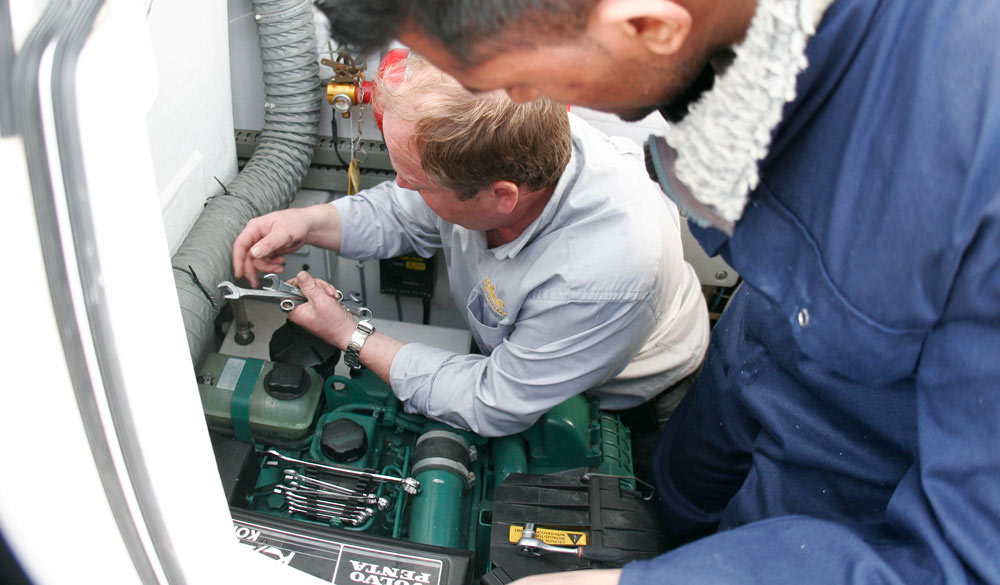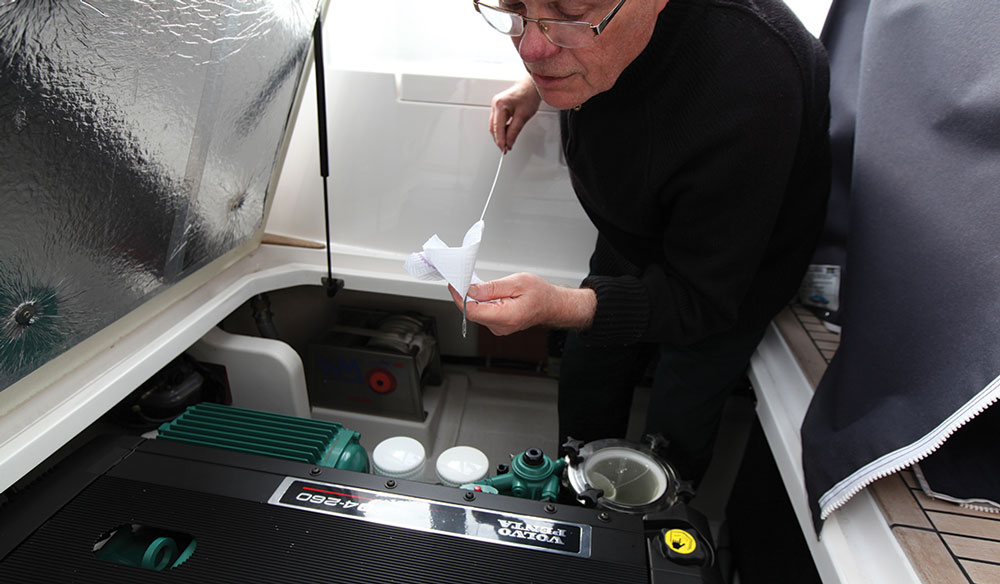Winterising your boat engine
If you only have time for one thing this winter, make sure it’s winterising your boat engine.

Boats contain a multitude of systems that hate inactivity, particularly the engine. While there are plenty of other items that benefit from winterisation, if you only have time for one make sure it’s the engine.
Many engineering companies will winterise your vessels engine(s) for you if it is something you would prefer a professional to do. But if you’d like to do it yourself, here are our top tips for winterising your boat’s diesel engine.
1. General cleaning and observation
First on the list is general engine cleaning and observation. Shine plenty of light and use a mirror on a stick or digital camera to see under and behind things.
Dry the bilges to prevent corrosion and if necessary, paint them white to highlight any leaks and drips in the future.
2. Fill your fuel tank
Whether your boat is being hauled out for the winter or not, fill your fuel tank to prevent condensation, which in turn prevents the growth of diesel bug.
3. Change the engine oil
When winterising your engine, make sure to change the engine oil and replace the oil filter before leaving it for the winter. Leaving the old oil contaminated with the acidic by-products of combustion inside the engine block will shorten the engine’s life. A neglected oil system will cause expensive damage.
Also consider using flushing oil or a flushing additive during the oil change, to help remove more of the contaminants.

4. Check the gearbox
Check the gearbox or outdrive oil and replace if it looks cloudy or milky.
5. Drain the raw water system
Most diesel engines use raw water cooling which needs attention. Raw water systems require draining before leaving for the winter. This done by closing the water inlet valve, or sea cock, disconnecting a hose from the circulating pump (unless there is a dedicated tap or plug), and refilling with a strong solution of fresh antifreeze.
Run the engine to fully circulate the new solution. Simply draining the system is unlikely to remove all the water inside, which may then freeze and cause damage over the winter.
6. Check the water pump impeller
Check the water pump impeller and consider replacing it when getting your boat ready for summer in case the blades have deformed over the winter.
7. Remove the air intake filter
Remove the air intake filter and block the intake with an oily rag to prevent rust inside, do the same for the exhaust. Squirt a little oil into the intake and turn over the engine, (without starting), to distribute it over the cylinder walls.
Be sure to place a warning about the blocked intake on the engine control panel to prevent anyone turning the engine over.
8. Remove the batteries
Where possible, remove the batteries and keep them warm and dry over the winter, fully charged or topped up at least every four to six weeks. Batteries left uncharged for long periods may need to be replaced completely.
If you’re unable to remove batteries or if the boat is staying on its mooring, leave them fully topped up and regularly recharged, as full batteries are less likely to freeze in sub-zero temperatures.

9. Belts and drive wheels
Relax or remove all belts and protect the drive wheels. Rust on these can chew up a belt very quickly in the new season.
10. Make a list
Lastly, make sure you keep a list of what you’ve done to winterise your engine so you can reverse any changes in the spring.
Find out more
The one-day RYA Diesel Engine course will help you prevent and solve diesel engine failure, covering basic maintenance and engine care including winterisation.

The RYA Diesel Engine Handbook is essential reading for leisure boat owners. Available as both a book and eBook with easy to follow text and detailed illustrations, with the digital version offering enhanced with animations and video content.
Discover more about the full range of RYA books and courses.
